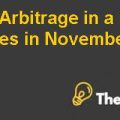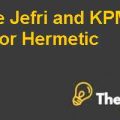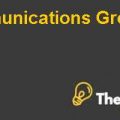Cool Plc
Cool Plc is a wholesale company selling frozen food. As per the nature of the business,it is majorly influenced by the number of its customers who buy frozen food in bulk from Cool Plc and its ability to manage its inventory. We have the financial statements of Cool Plc for the period of the year 2016 and 2017.
Issues Faced by the Chief Executive in understanding some accounts:
A major part of that investment is used in purchasing equipment and rest is used to pay liabilities. Moreover,the company used that cash to increase inventory but due to operational inefficiency company failed to increase their profits by the major difference.
Ratio Analysis:
Ratios analysis is a quantitative tool which helps us in assessing the company’s financial performance using financial statement figures of the company. This tool is beneficial for both investors and owners of the company. As, at the end of the day, what matters is financial performance because businesses are established with the purpose of making money and different types of ratios are tools to evaluate the performance of the firm in different dimensions. We will use the following ratios to assess the performance of Cool Plc.
Cool Plc Harvard Case Solution & Analysis
Profitability Ratios:
Obvious from its name, profitability ratios show the ability of the firm to generate profits out of its operations. Following are some famous ratios for assessing the profitability:
Cool Plc has shown a slight improvement in operating profit margin in the year 2017 as compared to the last year i.e. 13.8% and 13.33% respectively.
Profit margin has shown a slight decrease, but as we know that the firm has issued bonds this year to finance the purchase of equipment so this shouldn’t be taken as negative.
In terms of returns, Cool Plc has improved incomparasion to the last years as return on assets, return on equity and return on capital employed, all have shown a significant increase.
Company’s gross profit margin has decreased which is an indicator that competition was higher in the year, as the firm’s sales have increased but gross margins have decreased.
| Ratio Analysis | ||||||
| Profitability Ratios | Formula | 2017 | 2016 | |||
| % | % | |||||
| operating Profit Margin | = | Operating profit | 263 | 13.8% | 220 | 13.3% |
| Total Sales | 1,904 | 1,656 | ||||
| Profit Margin | = | Net Profit | 124 | 6.5% | 110 | 6.6% |
| Total Sales | 1,904 | 1,656 | ||||
| Return on Assets | = | Net Profit | 124 | 6.8% | 110 | 6.5% |
| Total Assets | 1,825 | 1,699 | ||||
| Return on Equity | = | Net Profit | 124 | 8.7% | 110 | 7.9% |
| Total Owner's Equity | 1,430 | 1,396 | ||||
| Return on Capital Employed | = | EBIT (Earnings Before Interest & Tax) | 263 | 21.0% | 220 | 17.6% |
| (Total Assets - Current Assets) | 1,255 | 1,250 | ||||
| Gross Margin Ratio | = | Gross Profit | 724 | 38.0% | 662 | 40.0% |
| Total Sales | 1,904 | 1,656 | ||||
Liquidity Ratios:
Its shows how much firm is capable enough to pay offs its current liabilities out of its current assets. This is avery important tool in assessing the short-term financial health of the company and its ability to effectively manage short-term operations.
In comparison with the year 2016, the firm’sliquidity ratios have increased, which is due to an increase in account receivable and inventory when its current liabilities have decreased..............
This is just a sample partical work. Please place the order on the website to get your own originally done case solution.













